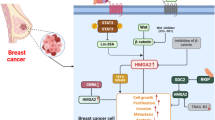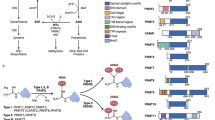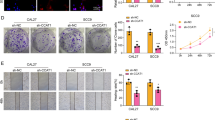Abstract
The protein arginine methyltransferase 5 (PRMT5) and its catalytic partner methylosome protein MEP50 (WDR77) catalyse the mono- and symmetric di-methylation of selective arginines in various histones and non-histone target proteins. It has emerged as a crucial epigenetic regulator in cell proliferation and differentiation; which also reported to be overexpressed in many forms of cancers in humans. In this study, we aimed to assess the modulations in the expression of this enzyme upon exposure to the well-studied natural compound from the spice turmeric, curcumin. We exposed the lung and breast cancer cell lines (A549 and MCF-7) to curcumin (2 and 20 μM) and observed a highly significant inhibitory effect on the expression of both PRMT5 and MEP50. The level of symmetrical dimethylarginine (SDMA) in multiple proteins, and more specifically, the H4R3me2s mark (which predominates in GC-rich motifs in nucleosomal DNA) was also diminished significantly. We also found that curcumin significantly reduced the level and enrichment of the transcription factors Sp1 and NF-YA which shares their binding sites within the GC-rich region of the PRMT5 proximal promoter. Furthermore, the involvement of both PKC-p38-ERK-cFos and AKT-mTOR signalling was observed in reducing the Sp1 and NF-YA expression by curcumin. Therefore, we propose curcumin decreased the expression of PRMT5 in these cells by affecting at least these two transcription factors. Altogether, we report a new molecular target of curcumin and further elucidation of this proposed mechanism through which curcumin affects the PRMT5-MEP50 methyltransferase expression might be explored for its therapeutic application.






Similar content being viewed by others
References
Pollack BP, Kotenko SV, He W, Izotova LS, Barnoski BL, Pestka S (1999) The human homologue of the yeast proteins Skb1 and Hsl7p interacts with Jak kinases and contains protein methyltransferase activity. J Biol Chem 274:31531–31542
Stopa N, Krebs JE, Shechter D (2015) The PRMT5 arginine methyltransferase: many roles in development, cancer and beyond. Cell Mol Life Sci 72:2041–2059
Fabbrizio E, Messaoudi E, Polanowska S, Paul J, Cook C, Lee JR, Negre J-H, Rousset V, Pestka M, Le Cam S, A., et al (2002) Negative regulation of transcription by the type II arginine methyltransferase PRMT5. EMBO Rep 3:641–645
Pal S, Vishwanath SN, Erdjument-Bromage H, Tempst P, Sif S (2004) Human SWI/SNF-associated PRMT5 methylates histone H3 arginine 8 and negatively regulates expression of ST7 and NM23 tumor suppressor genes. Mol Cell Biol 24:9630–9645
Morales Y, Cáceres T, May K, Hevel JM (2016) Biochemistry and regulation of the protein arginine methyltransferases (PRMTs). Arch Biochem Biophys 590:138–152
Meister G, Eggert C, Bühler D, Brahms H, Kambach C, Fischer U (2001) Methylation of Sm proteins by a complex containing PRMT5 and the putative U snRNP assembly factor pICln. Curr Biol 11:1990–1994
Bandyopadhyay S, Harris DP, Adams GN, Lause GE, McHugh A, Tillmaand EG, Money A, Willard B, Fox PL, DiCorleto PE (2012) HOXA9 methylation by PRMT5 Is essential for endothelial cell expression of leukocyte adhesion molecules. Mol Cell Biol 32:1202–1213
Hsu J-M, Chen C-T, Chou C-K, Kuo H-P, Li L-Y, Lin C-Y, Lee H-J, Wang Y-N, Liu M, Liao H-W et al (2011) Crosstalk between Arg 1175 methylation and Tyr 1173 phosphorylation negatively modulates EGFR-mediated ERK activation. Nat Cell Biol 13:174–181
Andreu-Perez P, Esteve-Puig R, de Torre-Minguela C, Lopez-Fauqued M, Bech-Serra JJ, Tenbaum S, Garcia-Trevijano ER, Canals F, Merlino G, Avila MA et al (2011) Protein arginine methyltransferase 5 regulates ERK1/2 signal transduction amplitude and cell fate through CRAF. Sci Signal 4:ra58–ra58
Karkhanis V, Hu Y-J, Baiocchi RA, Imbalzano AN, Sif S (2011) Versatility of PRMT5-induced methylation in growth control and development. Trends Biochem Sci 36:633–641
Meister G, Fischer U (2002) Assisted RNP assembly: SMN and PRMT5 complexes cooperate in the formation of spliceosomal UsnRNPs. EMBO J 21:5853–5863
Blanc RS, Richard S (2017) Arginine methylation: the coming of age. Mol Cell 65:8–24
Rho J, Choi S, Seong YR, Cho W-K, Kim SH, Im D-S (2001) PRMT5, which forms distinct homo-oligomers, is a member of the protein-arginine methyltransferase family. J Biol Chem 276:11393–11401
Lacroix M, El Messaoudi S, Rodier G, Le Cam A, Sardet C, Fabbrizio E (2008) The histone-binding protein COPR5 is required for nuclear functions of the protein arginine methyltransferase PRMT5. EMBO Rep 9:452–458
Zhou Z, Sun X, Zou Z, Sun L, Zhang T, Guo S, Wen Y, Liu L, Wang Y, Qin J et al (2010) PRMT5 regulates Golgi apparatus structure through methylation of the golgin GM130. Cell Res 20:1023–1033
Burgos ES, Wilczek C, Onikubo T, Bonanno JB, Jansong J, Reimer U, Shechter D (2015) Histone H2A and H4 N-terminal tails are positioned by the MEP50 WD repeat protein for efficient methylation by the PRMT5 arginine methyltransferase. J Biol Chem 290:9674–89
Antonysamy S (2017) The Structure and Function of the PRMT5:MEP50 Complex. Subcell Biochem 83:185–194
Chen H, Lorton B, Gupta V, Shechter D (2017) A TGFβ-PRMT5-MEP50 axis regulates cancer cell invasion through histone H3 and H4 arginine methylation coupled transcriptional activation and repression. Oncogene 36:373–386
Richters A (2017) Targeting protein arginine methyltransferase 5 in disease. Future Med Chem 9:2081–2098
Amano Y, Matsubara D, Yoshimoto T, Tamura T, Nishino H, Mori Y, Niki T (2018) Expression of protein arginine methyltransferase-5 in oral squamous cell carcinoma and its significance in epithelial-to-mesenchymal transition. Pathol Int 68:359–366
Gu Z, Gao S, Zhang F, Wang Z, Ma W, Davis RE, Wang Z (2012) Protein arginine methyltransferase 5 is essential for growth of lung cancer cells. Biochem J 446:235–241
Sheng X, Wang Z (2016) Protein arginine methyltransferase 5 regulates multiple signaling pathways to promote lung cancer cell proliferation. BMC Cancer BioMed Central 16:567
Jing P, Zhao N, Ye M, Zhang Y, Zhang Z, Sun J, Wang Z, Zhang J, Gu Z (2018) Protein arginine methyltransferase 5 promotes lung cancer metastasis via the epigenetic regulation of miR-99 family/FGFR3 signaling. Cancer Lett 427:38–48
Bao X, Zhao S, Liu T, Liu Y, Liu Y, Yang X (2013) Overexpression of PRMT5 promotes tumor cell growth and is associated with poor disease prognosis in epithelial ovarian cancer. J Histochem Cytochem 61:206–217
Deng X, Shao G, Zhang H-T, Li C, Zhang D, Cheng L, Elzey BD, Pili R, Ratliff TL, Huang J et al (2017) Protein arginine methyltransferase 5 functions as an epigenetic activator of the androgen receptor to promote prostate cancer cell growth. Oncogene 36:1223–1231
Shimizu D, Kanda M, Sugimoto H, Shibata M, Tanaka H, Takami H, Iwata N, Hayashi M, Tanaka C, Kobayashi D et al (2017) The protein arginine methyltransferase 5 promotes malignant phenotype of hepatocellular carcinoma cells and is associated with adverse patient outcomes after curative hepatectomy. Int J Oncol 50:381–386
Jiang H, Zhu Y, Zhou Z, Xu J, Jin S, Xu K, Zhang H, Sun Q, Wang J, Xu J (2018) PRMT5 promotes cell proliferation by inhibiting BTG2 expression via the ERK signaling pathway in hepatocellular carcinoma. Cancer Med 7:869–882
Nicholas C, Yang J, Peters SB, Bill MA, Baiocchi RA, Yan F, Sïf S, Tae S, Gaudio E, Wu X et al (2013) PRMT5 Is Upregulated in Malignant and Metastatic Melanoma and Regulates Expression of MITF and p27Kip1. PLoS ONE 8:e74710
Wang L, Pal S, Sif S (2008) Protein arginine methyltransferase 5 suppresses the transcription of the RB family of tumor suppressors in leukemia and lymphoma cells. Mol Cell Biol 28:6262–6277
Ji S, Ma S, Wang W-J, Huang S-Z, Wang T, Xiang R, Hu Y-G, Chen Q, Li L-L, Yang S-Y (2017) Discovery of selective protein arginine methyltransferase 5 inhibitors and biological evaluations. Chem Biol Drug Des 89:585–598
Kong G-M, Yu M, Gu Z, Chen Z, Xu R-M, O’Bryant D, Wang Z (2017) Selective small-chemical inhibitors of protein arginine methyltransferase 5 with anti-lung cancer activity. PLoS ONE 12:e0181601
Mao R, Shao J, Zhu K, Zhang Y, Ding H, Zhang C, Shi Z, Jiang H, Sun D, Duan W et al (2017) Potent, Selective, and cell active protein arginine methyltransferase 5 (PRMT5) inhibitor developed by structure-based virtual screening and hit optimization. J Med Chem 60:6289–6304
Ye F, Zhang W, Ye X, Jin J, Lv Z, Luo C (2018) Identification of Selective, Cell Active Inhibitors of Protein Arginine Methyltransferase 5 through Structure-Based Virtual Screening and Biological Assays. J Chem Inf Model 58:1066–1073
Zhu K, Jiang C, Tao H, Liu J, Zhang H, Luo C (2018) Identification of a novel selective small-molecule inhibitor of protein arginine methyltransferase 5 (PRMT5) by virtual screening, resynthesis and biological evaluations. Bioorg Med Chem Lett 28:1476–1483
Hedrick E, Cheng Y, Jin U-H, Kim K, Safe S (2016) Specificity protein (Sp) transcription factors Sp1, Sp3 and Sp4 are non-oncogene addiction genes in cancer cells. Oncotarget 7:22245–22256
Safe S, Abbruzzese JL, Abdelrahim M, Hedrick E (2018) Specificity protein transcription factors and cancer: opportunities for drug development. Cancer Prev Res 11:371-382
Nardini M, Gnesutta N, Donati G, Gatta R, Forni C, Fossati A, Vonrhein C, Moras D, Romier C, Bolognesi M et al (2013) Sequence-Specific Transcription Factor NF-Y Displays Histone-like DNA Binding and H2B-like Ubiquitination. Cell 152:132–143
Gurtner A, Manni I, Piaggio G (2017) NF-Y in cancer: Impact on cell transformation of a gene essential for proliferation. Biochim Biophys Acta 1860:604–616
Yamanaka K, Mizuarai S, Eguchi T, Itadani H, Hirai H, Kotani H (2009) Expression levels of NF-Y target genes changed by CDKN1B correlate with clinical prognosis in multiple cancers. Genomics 94:219–227
Zhang H-T, Zhang D, Zha Z-G, Hu C-D (2014) Transcriptional activation of PRMT5 by NF-Y is required for cell growth and negatively regulated by the PKC/c-Fos signaling in prostate cancer cells. Biochim Biophys Acta 1839:1330–1340
Balasubramanyam K, Varier RA, Altaf M, Swaminathan V, Siddappa NB, Ranga U, Kundu TK (2004) Curcumin, a novel p300/CREB-binding protein-specific inhibitor of acetyltransferase, represses the acetylation of histone/nonhistone proteins and histone acetyltransferase-dependent chromatin transcription. J Biol Chem 279:51163–51171
Soflaei SS, Momtazi-Borojeni AA, Majeed M, Derosa G, Maffioli P, Sahebkar A (2018) Curcumin: a natural Pan-HDAC inhibitor in cancer. Curr Pharm Des 24:123–129
Hua W-F, Fu Y-S, Liao Y-J, Xia W-J, Chen Y-C, Zeng Y-X, Kung H-F, Xie D (2010) Curcumin induces down-regulation of EZH2 expression through the MAPK pathway in MDA-MB-435 human breast cancer cells. Eur J Pharmacol 637:16–21
Wu G-Q, Chai K-Q, Zhu X-M, Jiang H, Wang X, Xue Q, Zheng A-H, Zhou H-Y, Chen Y, Chen X-C et al (2016) Anti-cancer effects of curcumin on lung cancer through the inhibition of EZH2 and NOTCH1. Oncotarget 7:26535–26550
Liu Z, Xie Z, Jones W, Pavlovicz RE, Liu S, Yu J, Li P, Lin J, Fuchs JR, Marcucci G et al (2009) Curcumin is a potent DNA hypomethylation agent. Bioorg Med Chem Lett 19:706–709
Yu J, Peng Y, Wu L-C, Xie Z, Deng Y, Hughes T, He S, Mo X, Chiu M, Wang Q-E et al (2013) Curcumin down-regulates dna methyltransferase 1 and plays an anti-leukemic role in acute myeloid leukemia. PLoS ONE 8:e55934
Khor TO, Huang Y, Wu T-Y, Shu L, Lee J, Kong A-NT (2011) Pharmacodynamics of curcumin as DNA hypomethylation agent in restoring the expression of Nrf2 via promoter CpGs demethylation. Biochem Pharmacol 82:1073–1078
Schneider CA, Rasband WS, Eliceiri KW (2012) NIH Image to ImageJ: 25 years of image analysis. Nat Methods 9:671–675
Cartharius K, Frech K, Grote K, Klocke B, Haltmeier M, Klingenhoff A, Frisch M, Bayerlein M, Werner T (2005) MatInspector and beyond: promoter analysis based on transcription factor binding sites. Bioinformatics 21:2933–2942
Zhao Q, Rank G, Tan YT, Li H, Moritz RL, Simpson RJ, Cerruti L, Curtis DJ, Patel DJ, Allis CD et al (2009) PRMT5-mediated methylation of histone H4R3 recruits DNMT3A, coupling histone and DNA methylation in gene silencing. Nat Struct Mol Biol 16:304–311
Jeon J-Y, Lee J, Park E-R, Shen Y, Kim M-Y, Shin H-J, Joo H-Y, Cho E-H, Moon S, Shin U et al (2018) Protein arginine methyltransferase 5 is implicated in the aggressiveness of human hepatocellular carcinoma and controls the invasive activity of cancer cells. Oncol Rep 40:536–544
Strimpakos AS, Sharma RA (2008) Curcumin: Preventive and therapeutic properties in laboratory studies and clinical trials. Antioxid Redox Signal 10:511–546
Hewlings SJ, Kalman DS (2017) Curcumin: a review of its’ effects on human health. Foods 6:92
O’Sullivan-Coyne G, O’Sullivan GC, O’Donovan TR, Piwocka K, McKenna SL (2009) Curcumin induces apoptosis-independent death in oesophageal cancer cells. Br J Cancer 101:1585
Rivera M, Ramos Y, Rodríguez-Valentín M, López-Acevedo S, Cubano LA, Zou J, Zhang Q, Wang G, Boukli NM (2017) Targeting multiple pro-apoptotic signaling pathways with curcumin in prostate cancer cells. PLoS ONE 12:e0179587
Liu F, Gao S, Yang Y, Zhao X, Fan Y, Ma W, Yang D, Yang A, Yu Y, Fan Y et al (2018) Antitumor activity of curcumin by modulation of apoptosis and autophagy in human lung cancer A549 cells through inhibiting PI3K/Akt/mTOR pathway. Oncol Rep 39:1523–1531
Bedford MT, Clarke SG (2009) Protein arginine methylation in mammals: who, what, and why. Mol Cell NIH Public Access 33:1–13
Xu X, Hoang S, Mayo MW, Bekiranov S (2010) Application of machine learning methods to histone methylation ChIP-Seq data reveals H4R3me2 globally represses gene expression. BMC Bioinform 11:396
Beishline K, Azizkhan-Clifford J (2015) Sp1 and the ‘hallmarks of cancer’. FEBS J 10(1111):224–258
Roder K, Wolf SS, Larkin KJ, Schweizer M (1999) Interaction between the two ubiquitously expressed transcription factors NF-Y and Sp1. Gene 234:61–69
Yamada K, Tanaka T, Miyamoto K, Noguchi T (2000) Sp family members and nuclear factor-Y cooperatively stimulate transcription from the rat pyruvate Kinase M gene distal promoter region via their direct interactions. J Biol Chem 275:18129–18137
Nicolás M, Noé V, Ciudad CJ (2003) Transcriptional regulation of the human Sp1 gene promoter by the specificity protein (Sp) family members nuclear factor Y (NF-Y) and E2F. Biochem J 371:265–275
Suske G (2017) NF-Y and SP transcription factors—New insights in a long-standing liaison. Biochim Biophys Acta 1860:590–597
Chhunchha B, Fatma N, Bhargavan B, Kubo E, Kumar A, Singh DP (2011) Specificity protein, Sp1-mediated increased expression of Prdx6 as a curcumin-induced antioxidant defense in lens epithelial cells against oxidative stress. Cell Death Dis 2:e234
Chadalapaka G, Jutooru I, Chintharlapalli S, Papineni S, Smith R, Li X, Safe S (2008) Curcumin decreases specificity protein expression in bladder cancer cells. Cancer Res 68:5345–5354
Jutooru I, Chadalapaka G, Lei P, Safe S (2010) Inhibition of NFkappaB and pancreatic cancer cell and tumor growth by curcumin is dependent on specificity protein down-regulation. J Biol Chem 285:25332–25344
Benatti P, Dolfini D, Viganò A, Ravo M, Weisz A, Imbriano C (2011) Specific inhibition of NF-Y subunits triggers different cell proliferation defects. Nucleic Acids Res 39:5356–5368
Belluti S, Basile V, Benatti P, Ferrari E, Marverti G, Imbriano C (2013) Concurrent inhibition of enzymatic activity and NF-Y-mediated transcription of Topoisomerase-IIα by bis-DemethoxyCurcumin in cancer cells. Cell Death Dis 4:e756–e756
Das J, Ramani R, Suraju MO (2016) Polyphenol compounds and PKC signaling. Biochim Biophys Acta NIH Public Access 1860:2107–2121
Isakov N (2018) Protein kinase C (PKC) isoforms in cancer, tumor promotion and tumor suppression. Semin Cancer Biol 48:36–52
Newton AC (2018) Protein kinase C: perfectly balanced. Crit Rev Biochem Mol Biol 53:208–230
Martini M, De Santis MC, Braccini L, Gulluni F, Hirsch E (2014) PI3K/AKT signaling pathway and cancer: an updated review. Ann Med 46:372–383
Nitulescu GM, Margina D, Juzenas P, Peng Q, Olaru OT, Saloustros E, Fenga C, Spandidos D, Libra M, Tsatsakis AM (2016) Akt inhibitors in cancer treatment: the long journey from drug discovery to clinical use (Review). Int J Oncol 48:869–885
Pons-Tostivint E, Thibault B, Guillermet-Guibert J (2017) Targeting PI3K signaling in combination cancer therapy. Trends Cancer 3:454–469
Acknowledgements
The authors acknowledge the funding and support of the Science and Engineering Research Board (SERB), New Delhi, India (EEQ-2016/000251).
Author information
Authors and Affiliations
Contributions
BC, and KG designed, carried out the experiments, analysed data and equally contributed to preparation of the manuscript. LS helped to acquire certain experimental data. SRK designed experiments and provided materials. BC, KG, and SRK wrote the paper.
Corresponding author
Ethics declarations
Conflict of interest
The authors express no conflict of interest.
Electronic supplementary material
Below is the link to the electronic supplementary material.
Rights and permissions
About this article
Cite this article
Chatterjee, B., Ghosh, K., Suresh, L. et al. Curcumin ameliorates PRMT5-MEP50 arginine methyltransferase expression by decreasing the Sp1 and NF-YA transcription factors in the A549 and MCF-7 cells. Mol Cell Biochem 455, 73–90 (2019). https://doi.org/10.1007/s11010-018-3471-0
Received:
Accepted:
Published:
Issue Date:
DOI: https://doi.org/10.1007/s11010-018-3471-0




